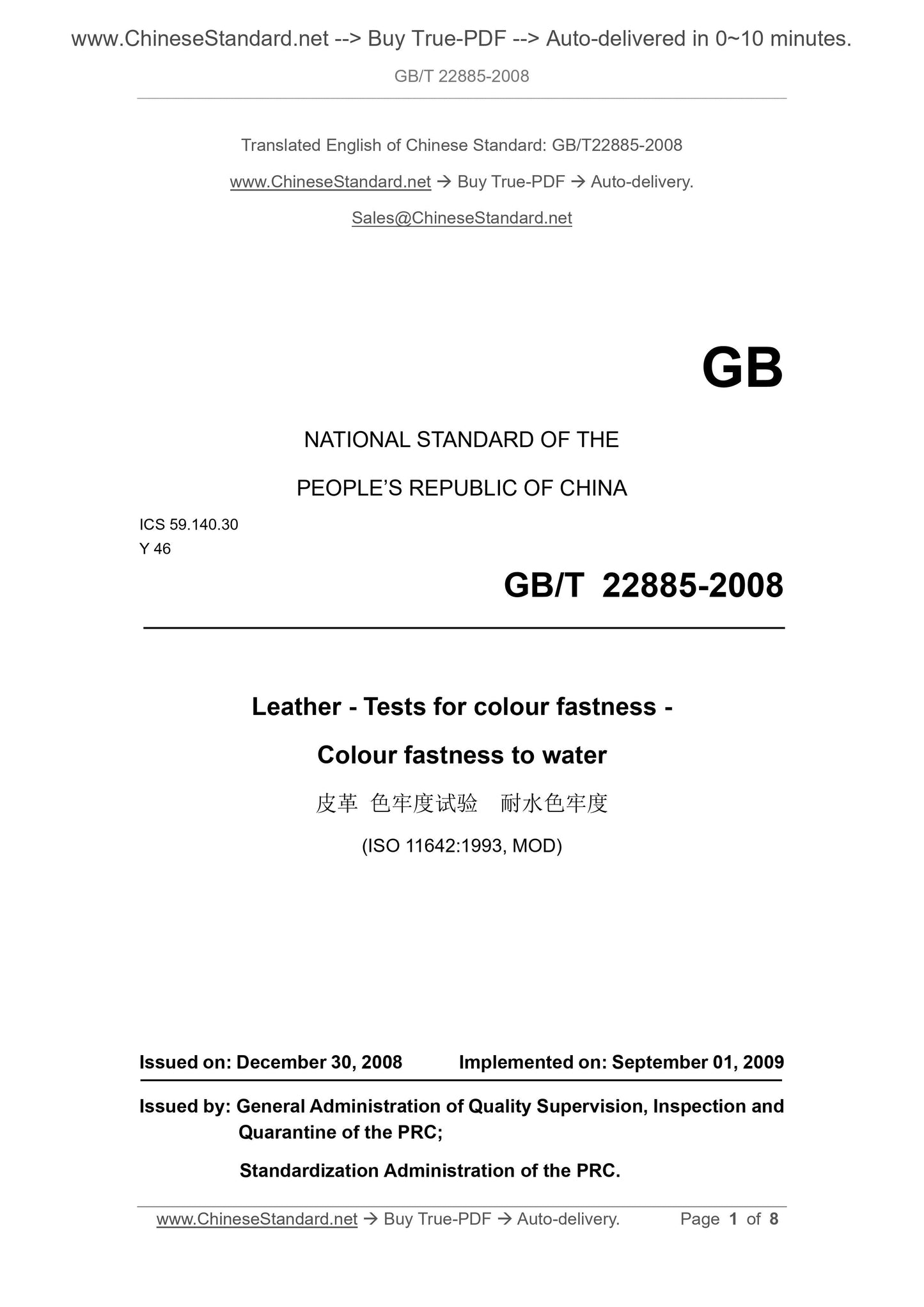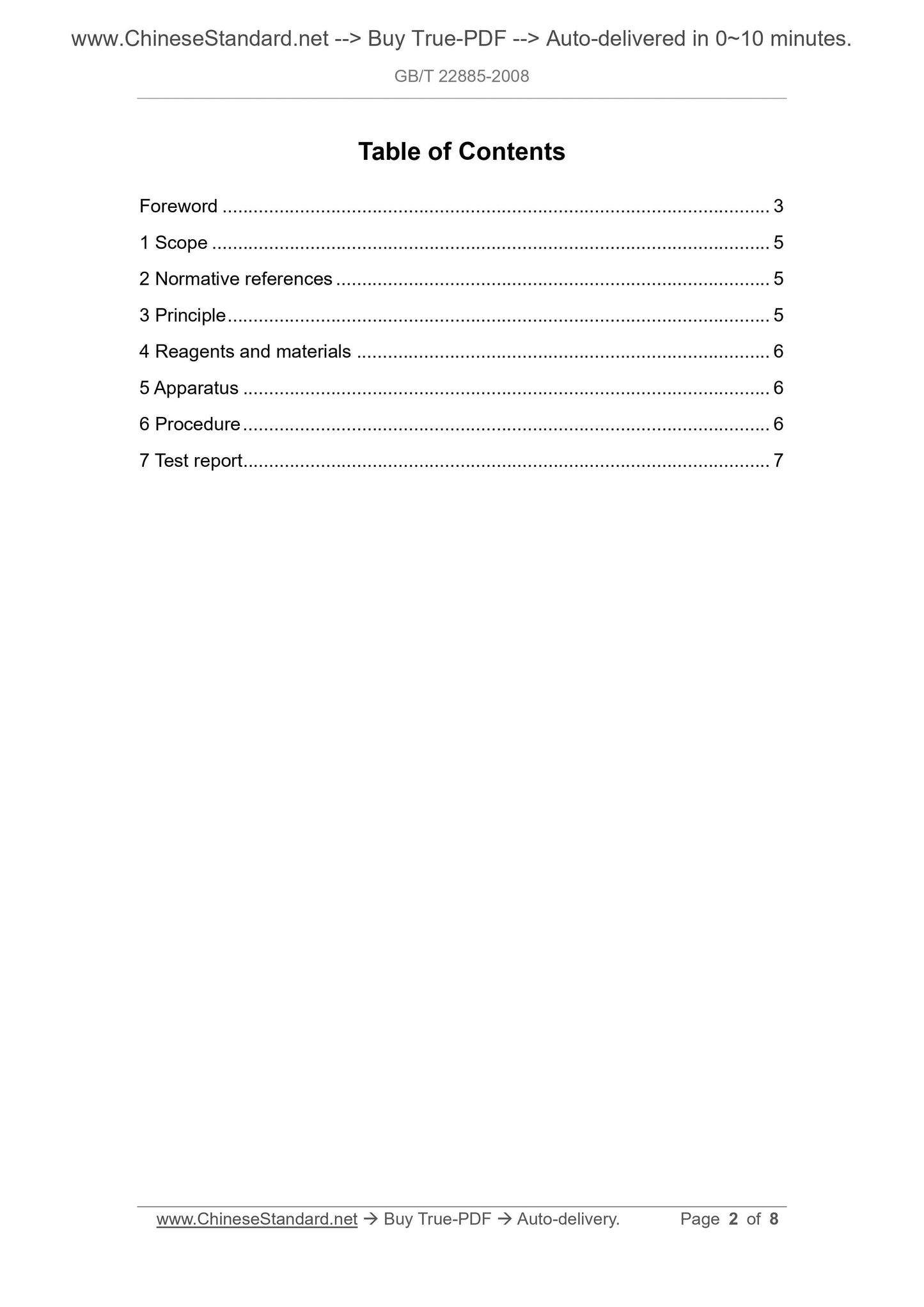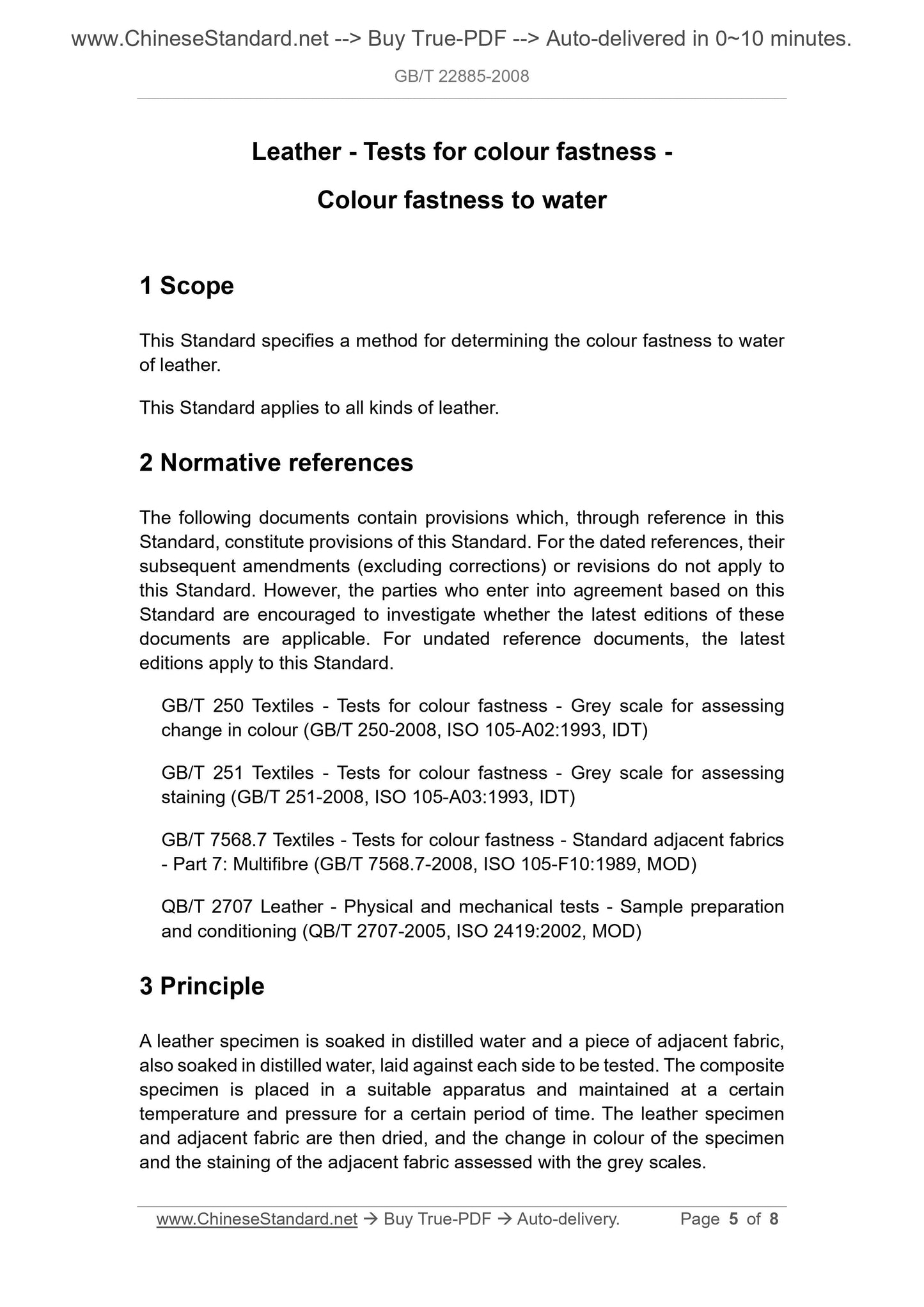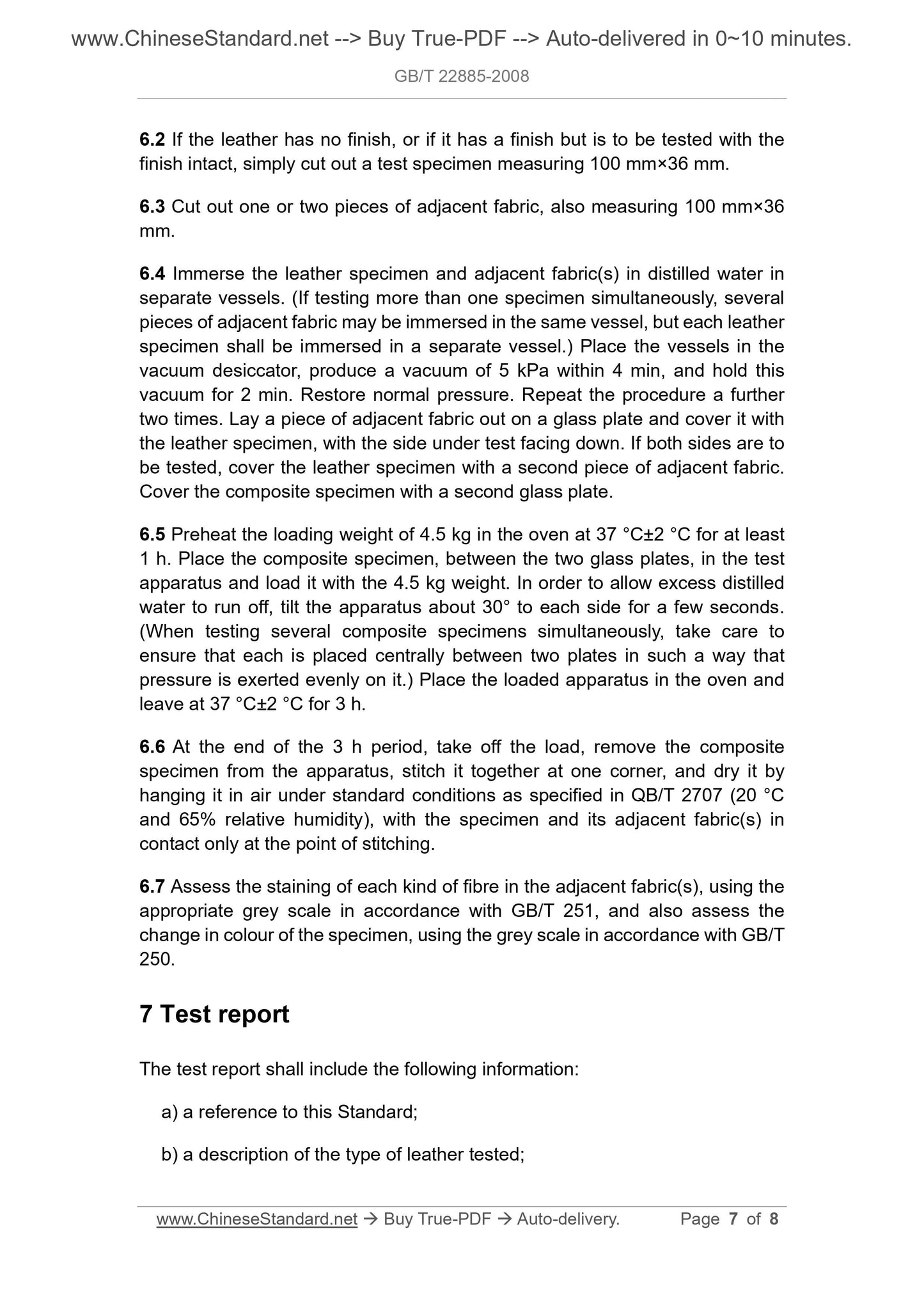1
/
of
4
www.ChineseStandard.us -- Field Test Asia Pte. Ltd.
GB/T 22885-2008 English PDF (GB/T22885-2008)
GB/T 22885-2008 English PDF (GB/T22885-2008)
Regular price
$70.00
Regular price
Sale price
$70.00
Unit price
/
per
Shipping calculated at checkout.
Couldn't load pickup availability
GB/T 22885-2008: Leather -- Tests for colour fastness -- Colour fastness to water
Delivery: 9 seconds. Download (and Email) true-PDF + Invoice.Get Quotation: Click GB/T 22885-2008 (Self-service in 1-minute)
Newer / historical versions: GB/T 22885-2008
Preview True-PDF
Scope
This Standard specifies a method for determining the colour fastness to waterof leather.
This Standard applies to all kinds of leather.
Basic Data
| Standard ID | GB/T 22885-2008 (GB/T22885-2008) |
| Description (Translated English) | Leather -- Tests for colour fastness -- Colour fastness to water |
| Sector / Industry | National Standard (Recommended) |
| Classification of Chinese Standard | Y46 |
| Classification of International Standard | 59.140.30 |
| Word Count Estimation | 8,875 |
| Date of Issue | 2008-12-30 |
| Date of Implementation | 2009-09-01 |
| Quoted Standard | GB/T 250; GB/T 251; GB/T 7568.7; QB/T 2707 |
| Adopted Standard | ISO 11642-1993, MOD |
| Regulation (derived from) | National Standard Approval Announcement 2008 No.25 (Total No.138) |
| Issuing agency(ies) | General Administration of Quality Supervision, Inspection and Quarantine of the People's Republic of China, Standardization Administration of the People's Republic of China |
| Summary | This standard specifies the method for determination of color fastness of leather. This standard applies to all kinds of leather. |
Share







